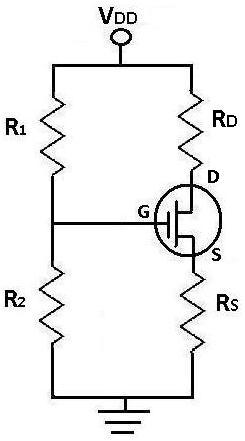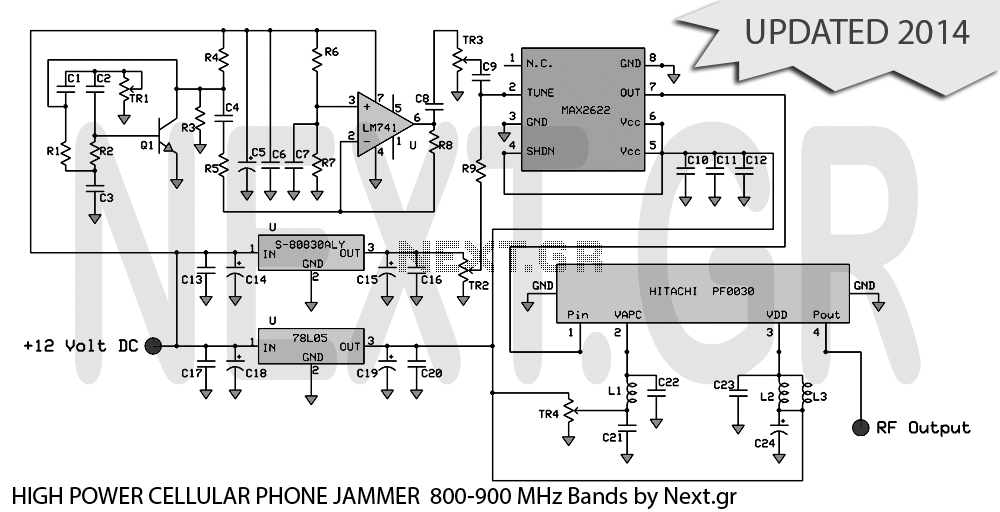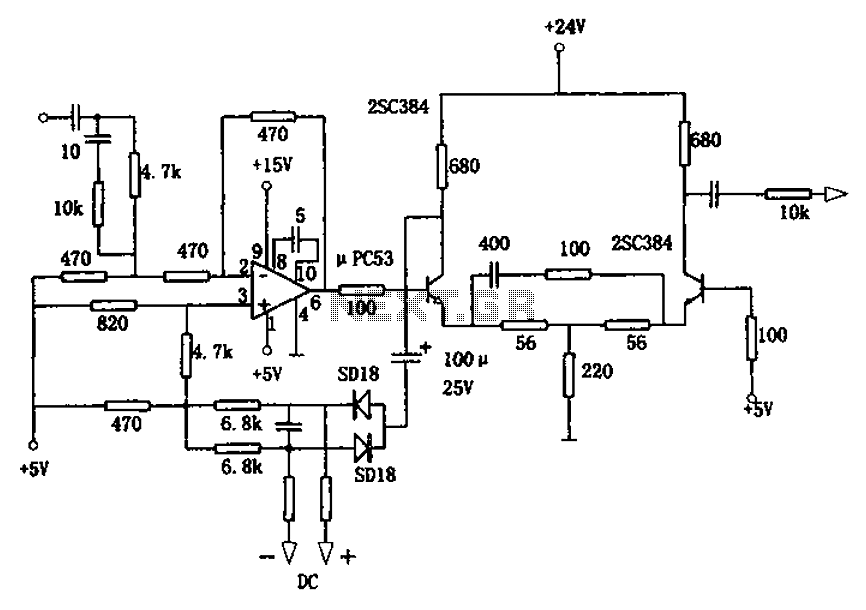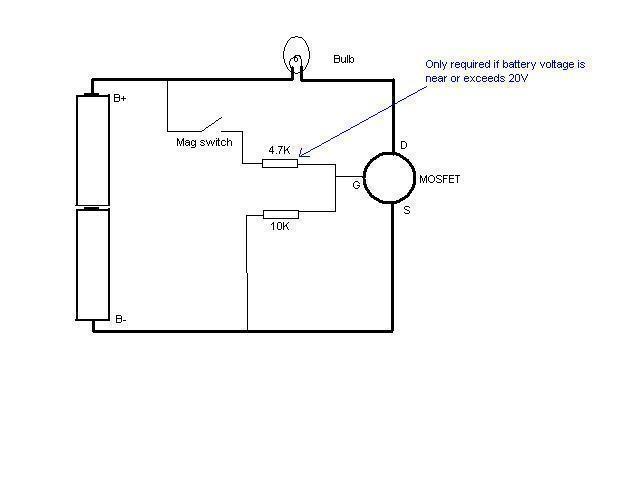
DC Analysis of a MOSFET Transistor Circuit

During DC analysis, all AC voltage sources are removed from the circuit since they are AC sources. DC analysis focuses solely on DC sources. Additionally, all capacitors are removed because, in a DC context, capacitors act as open circuits. Consequently, all components before and after the capacitors, including the resistor Rs, are also eliminated. The next step involves performing calculations for DC analysis. Vgs represents the voltage across the gate and source of the MOSFET transistor. This voltage is essential for determining Ids, the current flowing from the drain to the source, as Vgs must be known to solve for Ids. After solving for Ids, two currents will be obtained from the quadratic equation. The current that results in a Vgs exceeding Vtn is considered the actual current of the circuit, while the other current should be disregarded.
In the context of DC analysis for a MOSFET circuit, the process begins by simplifying the circuit to focus only on the relevant DC components. This involves removing all AC sources and capacitors, which simplifies the analysis significantly. The MOSFET's gate-source voltage, Vgs, is critical as it directly influences the operation of the transistor. Vgs must be calculated accurately, as it determines whether the MOSFET is in the cutoff, triode, or saturation region.
To calculate Ids, the drain-source current, it is necessary to apply the MOSFET equations, which typically involve quadratic relationships. The standard equation for Ids in saturation is given by:
\[ Ids = \frac{1}{2} k_n (Vgs - Vtn)^2 \]
where \( k_n \) is the transconductance parameter and \( Vtn \) is the threshold voltage.
After substituting the calculated Vgs into this equation, the resulting quadratic equation will yield two possible values for Ids. The critical step is identifying the correct current that corresponds to a Vgs greater than Vtn. The other solution, which does not meet this criterion, indicates an invalid operating point for the circuit and should be discarded. This method ensures that the analysis yields a valid and functional current value that can be used for further circuit design and optimization.
In summary, the DC analysis process is integral for understanding the behavior of MOSFETs in circuits, as it allows for the determination of critical parameters that dictate the performance of the device under DC operating conditions.When doing DC analysis, all AC voltage sources are taken out of the circuit because they`re AC sources. DC analysis is concerned only with DC sources. We also take out all capacitors because in DC, capacitors function as open circuits. For this reason, everything before and after capacitors are removed, which in this circuit includes resistor, Rs.
Now let`s do the calculations for DC analysis. Vgs is the voltage that falls across the gate and the source of the mosfet transistor. It is crucial to calculate because in order to solve for Ids, the current from the drain to the source, Vgs must be known. Once you solve for Ids, you will get two currents from solving that quadratic equation. The current that produces a Vgs which is greater than Vtn is the real current of the circuit and the other should be eliminated.
🔗 External reference
In the context of DC analysis for a MOSFET circuit, the process begins by simplifying the circuit to focus only on the relevant DC components. This involves removing all AC sources and capacitors, which simplifies the analysis significantly. The MOSFET's gate-source voltage, Vgs, is critical as it directly influences the operation of the transistor. Vgs must be calculated accurately, as it determines whether the MOSFET is in the cutoff, triode, or saturation region.
To calculate Ids, the drain-source current, it is necessary to apply the MOSFET equations, which typically involve quadratic relationships. The standard equation for Ids in saturation is given by:
\[ Ids = \frac{1}{2} k_n (Vgs - Vtn)^2 \]
where \( k_n \) is the transconductance parameter and \( Vtn \) is the threshold voltage.
After substituting the calculated Vgs into this equation, the resulting quadratic equation will yield two possible values for Ids. The critical step is identifying the correct current that corresponds to a Vgs greater than Vtn. The other solution, which does not meet this criterion, indicates an invalid operating point for the circuit and should be discarded. This method ensures that the analysis yields a valid and functional current value that can be used for further circuit design and optimization.
In summary, the DC analysis process is integral for understanding the behavior of MOSFETs in circuits, as it allows for the determination of critical parameters that dictate the performance of the device under DC operating conditions.When doing DC analysis, all AC voltage sources are taken out of the circuit because they`re AC sources. DC analysis is concerned only with DC sources. We also take out all capacitors because in DC, capacitors function as open circuits. For this reason, everything before and after capacitors are removed, which in this circuit includes resistor, Rs.
Now let`s do the calculations for DC analysis. Vgs is the voltage that falls across the gate and the source of the mosfet transistor. It is crucial to calculate because in order to solve for Ids, the current from the drain to the source, Vgs must be known. Once you solve for Ids, you will get two currents from solving that quadratic equation. The current that produces a Vgs which is greater than Vtn is the real current of the circuit and the other should be eliminated.
🔗 External reference





